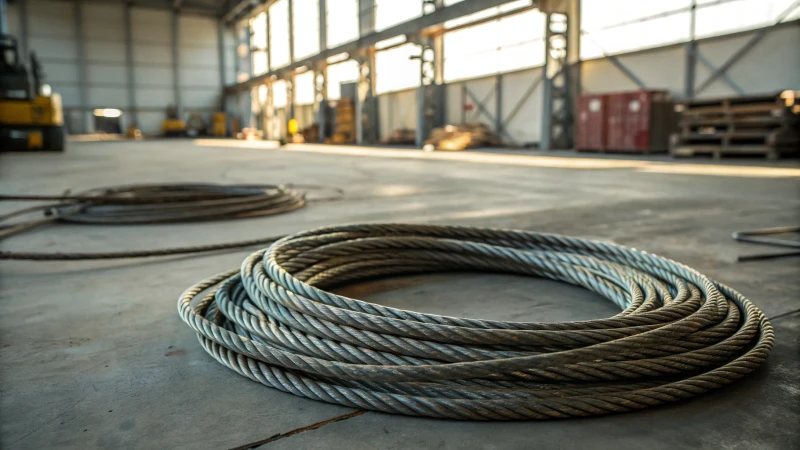
Navigating the world of steel wire rope standards can feel like stepping into a complex maze of numbers and codes.
Steel wire ropes for lifting and rigging must adhere to standards like ISO 2408 and EN 12385, which ensure they possess the necessary strength, flexibility, and safety for handling heavy loads. These standards are crucial for maintaining operational integrity and preventing failures in demanding environments.
Diving into these standards is not just about ticking boxes for compliance; it's about ensuring every lifting operation is as safe as possible. I remember a time when a project's success hinged on the reliability of our lifting gear. Choosing ropes that met ISO 2408 and EN 12385 gave us the peace of mind that we could carry out the task without unexpected hiccups. These standards aren't just abstract concepts—they're vital for making informed decisions that keep projects on track and, more importantly, people safe.
ISO 2408 is a standard for steel wire rope strength.True
ISO 2408 specifies requirements for the construction, dimensions, and performance of steel wire ropes.
EN 12385 applies only to non-lifting applications.False
EN 12385 specifically addresses safety requirements for steel wire ropes used in lifting operations.
What should I consider when selecting steel wire ropes?
Have you ever found yourself staring at a bundle of steel wire ropes, wondering about the specifications that make them tick?
When choosing steel wire ropes, focus on the diameter, construction type, tensile strength, core type, and compliance with standards like ISO 2408. These specifications determine if the rope can safely manage your load requirements.
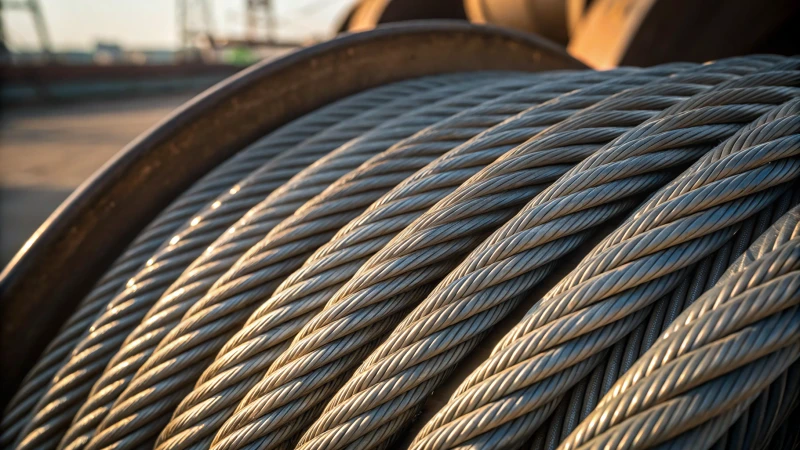
Understanding the Basics
You know those times when you're trying to pick the perfect tool for a job and feel overwhelmed by choices? That's exactly how I felt when I first dealt with steel wire ropes. They're not just a bunch of wires twisted together; they're meticulously crafted for specific tasks.
The diameter of these ropes is a critical aspect—kind of like picking the right size wrench for a bolt. It directly affects their strength and how much weight they can handle. Then, there's the configuration, like 6x19 or 6x36, which balances strength and flexibility. It's a bit like choosing between shoes—do you need them sturdy or flexible?
Core Types
Choosing the right core is crucial, much like picking the heart of your operation:
- Fiber Core (FC): Offers flexibility but lacks strength.
- Independent Wire Rope Core (IWRC): Enhances strength and resists deformation under load.
- Steel Core (SC): Increases resistance to crushing forces.
Tensile Strength
This is the muscle of your wire rope—its ability to withstand tension without snapping. Selecting the right tensile strength is as vital as making sure your car's brakes can handle steep hills safely.
Compliance with Standards
Much like how I always double-check safety standards1 when buying a new gadget, steel wire ropes must meet international criteria like ISO 2408 and EN 12385. These benchmarks ensure that the ropes won't fail when you need them most.
Additional Factors
When I think about longevity, coating comes to mind. Just as galvanized coatings protect against rust in steel wire ropes, a good waterproof jacket shields me from the rain. Plus, don't forget to consider environmental factors—like if you're working in high temperatures or humidity—that could impact your rope's performance.
| Specification | Details |
|---|---|
| Diameter | Critical for load capacity |
| Construction | 6x19, 6x36 configurations |
| Core Type | FC, IWRC, SC options available |
| Tensile Strength | Determines safe load limits |
| Compliance | Must meet ISO 2408, EN 12385 |
| Coating | Galvanized for better corrosion resistance |
| Environmental Factors | Consider temperature and humidity |
Knowing these specs is like having a map in hand—it guides you to pick the right steel wire ropes for safe and reliable operations.
Diameter affects steel rope's load capacity.True
The diameter determines the strength and load capacity of the rope.
Fiber core steel ropes are stronger than IWRC ropes.False
Fiber core offers flexibility, but IWRC enhances strength and durability.
How Do ISO 2408 and EN 12385 Standards Ensure Safety?
Ever wondered what keeps those massive cranes in check or ensures that the elevator cables in skyscrapers don't snap?
ISO 2408 and EN 12385 standards are crucial for the safety and quality of steel wire ropes, providing guidelines on tensile strength, fatigue resistance, and elongation to prevent failures in various industrial applications.
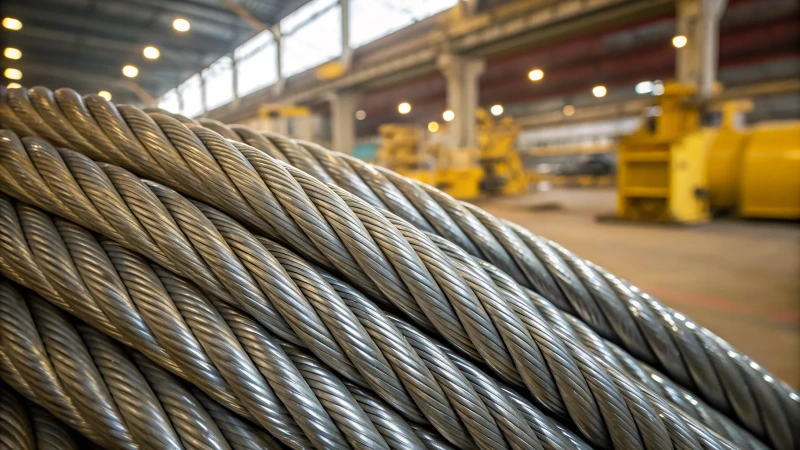
Understanding ISO 2408 and EN 12385 Standards
Let me take you back to the first time I encountered these standards. It was during a project where the stakes were as high as the building we were constructing. ISO 2408 lays down the general requirements for steel wire ropes, from their tensile strength to their mechanical properties. I remember the testing phase; it was like a science lab experiment, checking breaking loads and elongations. On the other hand, EN 12385 zeroes in on the ropes used for lifting and hoisting in the EU, really drilling down into safety through design and testing.
Key Safety Measures
Tensile Strength and Fatigue Resistance
One of my most memorable experiences was watching a test that checked tensile strength2. The steel wire ropes were pulled until they broke, which was both nerve-wracking and fascinating. This process is essential because it confirms that ropes can handle their expected loads. Similarly, fatigue resistance tests are crucial to ensure the ropes don't wear out from repeated use, a requirement set by EN 12385.
| Test | Purpose | Standard |
|---|---|---|
| Breaking Load | Determines maximum load capacity | ISO 2408 |
| Fatigue Resistance | Assesses durability under repeated use | EN 12385 |
Safety Testing Protocols
The testing protocols are like a rite of passage for these ropes. Each rope goes through non-destructive testing to spot any flaws or weaknesses. It's almost like a health check-up to ensure they're fit for duty.
- Breaking Load Test: Measures the load at which the rope breaks under tension.
- Elongation Test: Evaluates how much the rope stretches under load without permanent deformation.
- Fatigue Test: Checks endurance under repeated stress cycles.
Practical Implications in Industries
I often think about industries like construction or mining. They rely heavily on these standards to keep workers safe and operations smooth. Imagine a mining operation3 relying on ropes that meet these standards to lift heavy loads; it's a matter of life and death. Compliance not only protects workers but also boosts efficiency and cuts down liability risks.
Comparing ISO 2408 with EN 12385
When I first started understanding these standards, it felt like comparing apples to oranges. But once you dive in, you see that ISO 2408 is like a global guideline, while EN 12385 provides specific directions for EU applications, especially in lifting scenarios. Knowing these differences can be a game-changer for procurement managers who need to choose the right standard for their projects.
ISO 2408 focuses on global wire rope standards.True
ISO 2408 sets general requirements for steel wire ropes globally.
EN 12385 applies only to non-lifting applications.False
EN 12385 specifically addresses lifting and hoisting applications.
Why Are Safety Regulations More Important Than Ever?
Ever wondered why safety regulations are the talk of the town these days? Let me take you through a journey of why they matter so much.
Ensuring compliance with safety regulations is essential not only for legal protection but also for fostering a safe, productive workplace. It helps reduce accidents, boosts morale, and enhances productivity by ensuring that all safety measures are consistently followed.
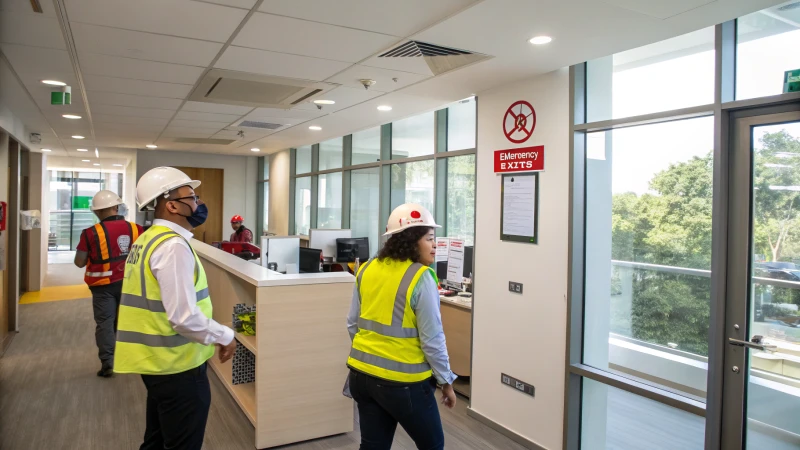
The Role of Safety Regulations in Workplace Culture
I remember the first time I walked onto a construction site. The hustle and bustle were thrilling, but the underlying emphasis on safety was unmistakable. Safety regulations serve as a backbone for workplace culture, ensuring everyone is on the same page. This framework not only shields us from harm but fosters a culture where we all watch out for each other. Compliance isn't just about following rules; it's about embedding safety measures4 into every part of our daily operations.
Legal and Financial Implications
I learned the hard way when a colleague's minor oversight led to major legal headaches for our company. Failing to comply with safety regulations can spiral into costly fines and sky-high insurance premiums, which hit us where it hurts—the bottom line. More than that, our reputation took a hit, affecting future business prospects.
Example: A construction company failing to meet OSHA standards might experience prolonged project delays due to accidents, leading to contract penalties and loss of client trust.
Enhancing Employee Well-being
A safe environment is a happy environment. When I worked in a setting that prioritized safety, my peace of mind soared. Knowing that stringent safety standards were met made us feel secure, boosting our morale and productivity. A happy team sticks around longer, reducing turnover and the costs associated with it.
| Benefit | Description |
|---|---|
| Reduced Accidents | Adhering to regulations helps minimize workplace incidents. |
| Increased Productivity | Safe environments boost worker efficiency. |
Technology's Impact on Safety Compliance
Technology has been a game-changer for us. With digital solutions5, monitoring compliance in real-time has become seamless. I recall integrating IoT devices into our operations—they tracked equipment usage and sent alerts for necessary maintenance, preventing potential hazards before they could occur.
Example: IoT devices in factories can track equipment usage and send alerts when maintenance is needed, preventing potential hazards.
Globalization and Standardization
As our company expanded globally, adhering to international standards like ISO became crucial. This consistency in safety measures across all locations not only maintained our credibility but strengthened relationships with global partners.
| Standard | Purpose |
|---|---|
| ISO 45001 | Sets requirements for occupational health and safety management systems. |
| ISO 14001 | Focuses on environmental management. |
Conclusion
Reflecting on why compliance is increasingly important, it's clear it goes beyond mere obligation. It's about crafting workplaces that are not only safe and efficient but also resilient in today's competitive landscape.
For deeper insights into specific regulations, consider exploring global safety standards6 applicable to your industry.
Safety regulations foster a culture of safety.True
Regulations create frameworks that prioritize safety, enhancing workplace culture.
Non-compliance with safety regulations has no financial impact.False
Non-compliance can lead to fines and higher insurance premiums, impacting finances.
How does market demand shape steel wire rope standards?
Ever wondered how market demand shapes the very standards that govern steel wire ropes?
Market demand shapes steel wire rope standards by necessitating enhancements in safety, quality, and performance. As industries like construction and mining grow, the demand for superior ropes increases, leading to stricter adherence to ISO and EN standards.
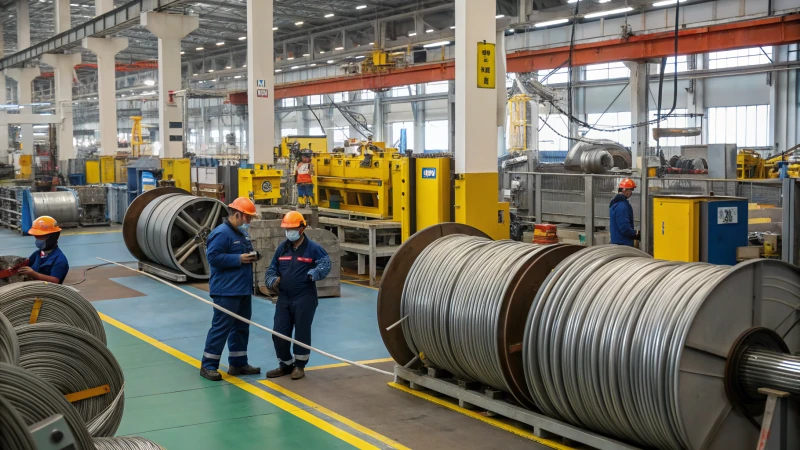
The Impact of Industrial Growth on Standards
Imagine being on a construction site, watching cranes lift massive beams. It’s a marvel of modern engineering that relies heavily on the strength of steel wire ropes. As industries like construction7 and mining expand, I've seen firsthand how the demand for more durable and high-performance steel wire ropes skyrockets. This isn't just about moving mountains—it's about safety and efficiency. Manufacturers feel the heat to meet strict international standards like ISO 2408 and EN 12385. These standards ensure that our ropes won't give way under pressure.
In construction, for instance, I’ve often been part of teams where procurement managers specifically seek out ropes that can handle not only heavy loads but also the stress of tight deadlines and rigorous safety requirements. It’s all about having confidence in your equipment.
Safety Regulations and Market Demand
Safety in industries that use steel wire ropes is non-negotiable. From my experience, as demand goes up, so does the scrutiny on compliance with safety regulations. High-strength ropes have to pass intense tests for breaking load, elongation under load, and fatigue resistance to be considered safe.
Here's a glimpse into what these requirements might look like:
| Test Type | Requirement |
|---|---|
| Breaking Load | High threshold |
| Elongation Under Load | Minimal stretch |
| Fatigue Resistance | High cycles |
I remember once working on a project in the mining sector where the ropes had to endure not just weight but also the harshest conditions underground. The need for corrosion resistance and endurance became a major factor in choosing our product specifications8.
Technological Advancements Drive Standards
In the realm of steel wire ropes, innovation is crucial. With market demand pushing for better performance characteristics, manufacturers are constantly investing in R&D. I’ve witnessed some incredible advancements, especially in coating materials, which have led to ropes with enhanced corrosion resistance—essential for marine applications exposed to saltwater.
Procurement officers in sectors like marine shipping are now all about sourcing from suppliers who provide cutting-edge solutions that meet the latest standards. They even demand technical support9 from suppliers, ensuring they receive products aligned with evolving industry needs.
By understanding these dynamics, I've learned that stakeholders can better prepare for changes in steel wire rope standards driven by market demand. It's a continuous learning journey where staying ahead of the curve is key to success.
Market demand increases steel wire rope standards.True
Higher demand necessitates adherence to strict standards like ISO 2408.
Technological advancements lower steel wire rope safety standards.False
Advancements improve performance, raising safety standards and compliance.
Conclusion
Steel wire ropes for lifting and rigging must meet ISO 2408 and EN 12385 standards, ensuring safety, strength, and reliability in demanding industrial applications.
-
This link offers detailed insights into what each specification means and how it impacts wire rope performance. ↩
-
Learn how tensile strength impacts the performance and safety of wire ropes in industrial applications. ↩
-
Discover the importance of adhering to safety standards in mining to prevent accidents and ensure efficient operations. ↩
-
Learn about best practices for implementing effective workplace safety measures that comply with regulations. ↩
-
Explore how technology can simplify safety compliance and improve efficiency in monitoring workplace standards. ↩
-
Understand the international safety standards relevant to various industries and their role in compliance. ↩
-
Discover how construction trends influence steel wire rope specifications and procurement strategies. ↩
-
Learn about the specific requirements these standards set for steel wire ropes. ↩
-
Explore why technical support is crucial when selecting steel wire rope suppliers. ↩

